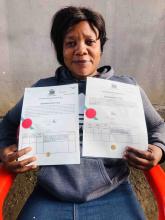Land Library Search
Through our robust search engine, you can search for any item of the over 73,000 highly curated resources in the Land Library.
If you would like to find an overview of what is possible, feel free to peruse the Search Guide.
/ library resources
Showing items 1 through 9 of 56.Depuis plus de cinq ans, le projet WOLTS (Women’s Land Tenure Security) étudie le croisement entre les relations de genre et de droits fonciers dans les communautés pastorales affectées par l’exploitation minière en Mongolie et en Tanzanie.
Эмэгтэйчүүдийн Газар Эдэлбэрийн Эрхийн Баталгаат Байдал төсөл нь (ЭГЭЭББ) сүүлийн таван жилийн хугацаанд Монгол, Танзани улсуудад уул уурхайн нөлөөнд өртсөн нүүдэлч малчин иргэдийн жендер болон газрын харилцааны хамаарлыг судаллаа. Тус ажлын үндсэн зорилго нь орон нутгийн иргэдт
Kwa zaidi ya miaka mitano, Mradi wa Usalama wa Umiliki wa Ardhi kwa Wanawake (WOLTS) umekuwa ukichunguza uhusiano wa kijinsia na ardhi katika jamii za wafugaji zilizoathiriwa na uchimbaji wa madini Mongolia na Tanzania.
Key Messages and Recommendations
• Combating desertification and land degradation while mitigating the effects of drought can secure long-term socio-economic benefits for people living in drylands and reduce their vulnerability to climate change.
This one-pager provides details on the LAND-at-scale project in Burundi. This project is implemented by ZOA, VNG International and MiPAREC, and financed by the Ministry of Foreign Affairs via the Netherlands Enterprise & Development Agency.
This one-pager provides details on the LAND-at-scale project in Burkina Faso.
This article highlights the gender inequality that currently exists in land ownership in Zambia. Zambia currently has two land tenure systems, both of which are relic of the colonial era.
En Luchas de alto riesgo: Las mujeres en primera línea en la defensa de la tierra y el territorio se documenta de qué manera las organizaciones campesinas, indígenas y de mujeres que trabajan en el campo del desarrollo rural en Guatemala, Honduras y Colombia, experimentan los r
Gender and land rights are closely intertwined with each other. Globally, more than 400 million women work in agriculture. Women comprise 43 percent of the agricultural labor force in developing countries, yet they account for less than 20 percent of landholders (FAO 2011).







